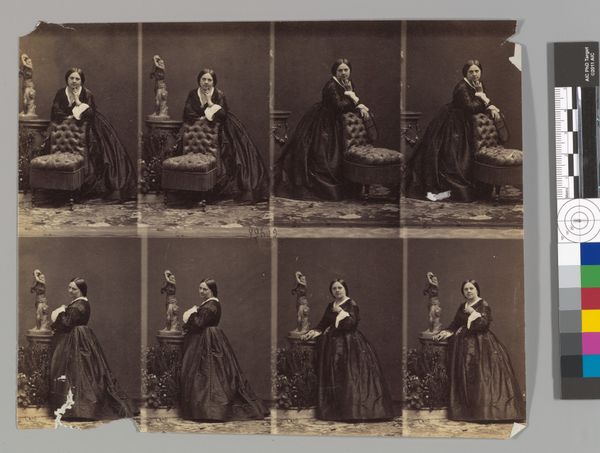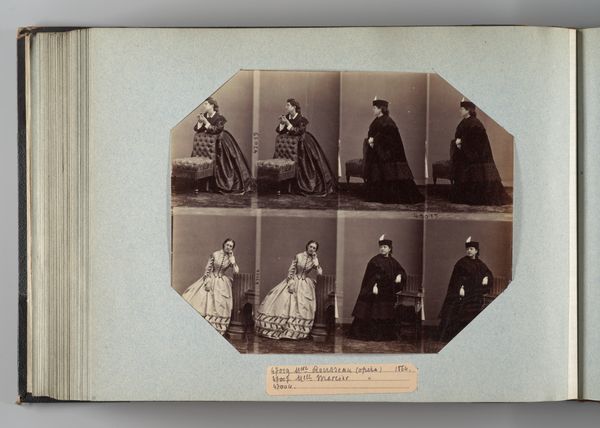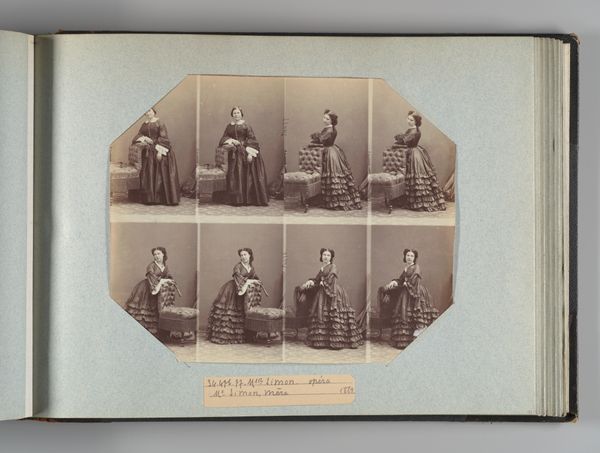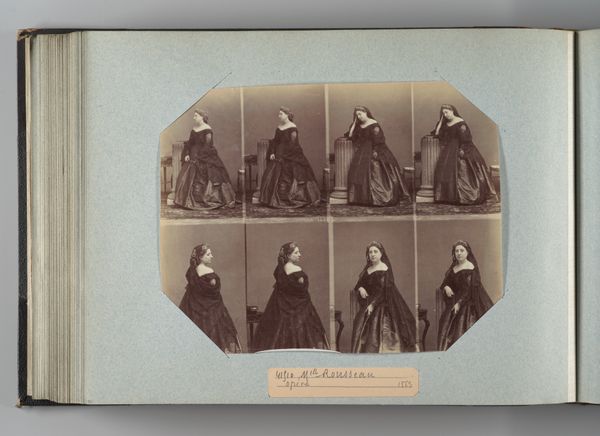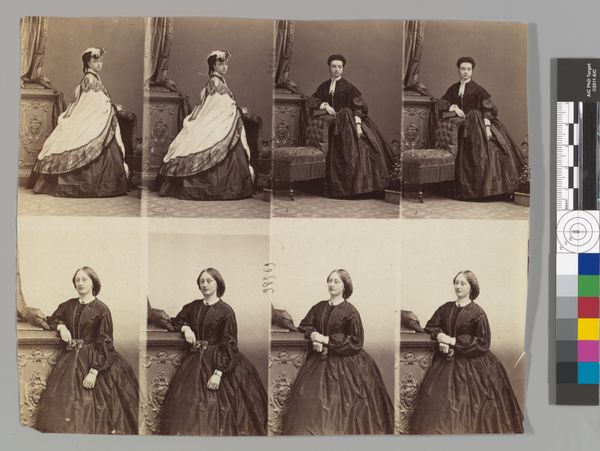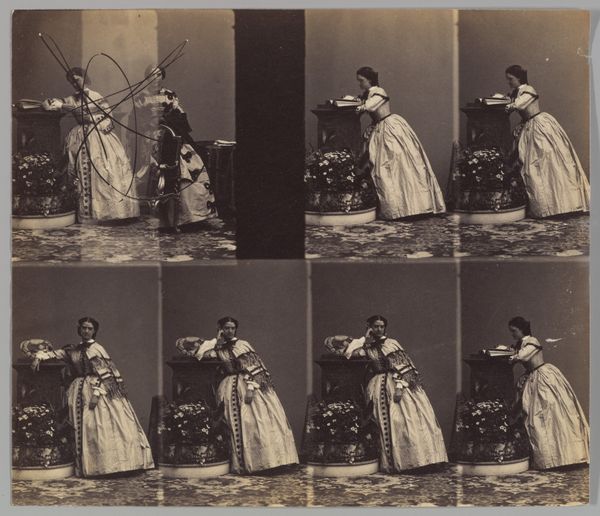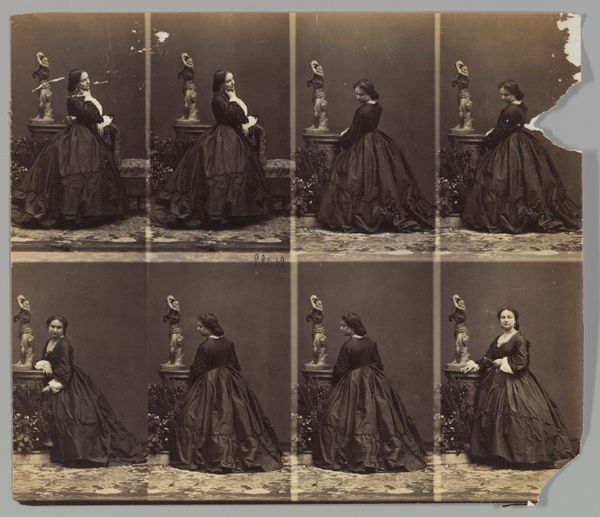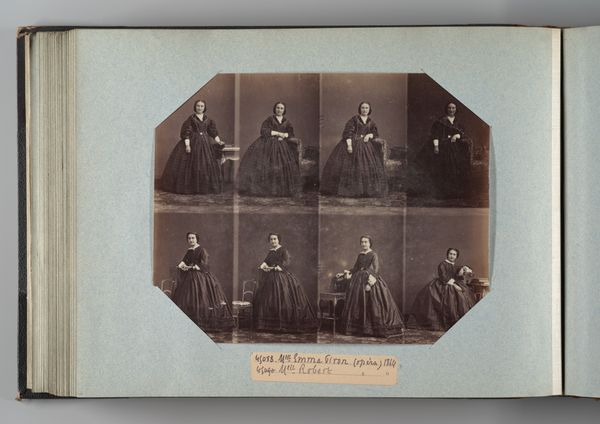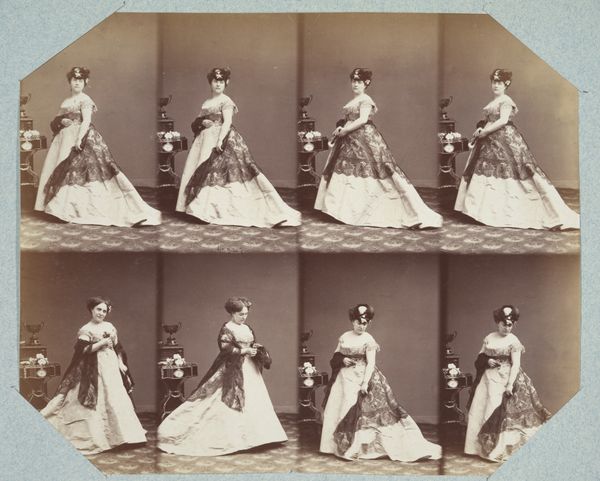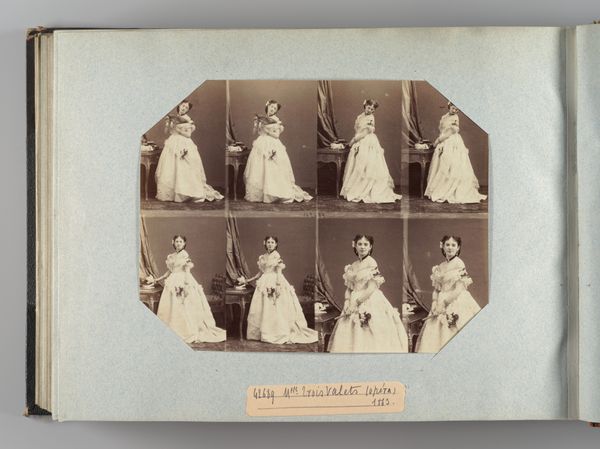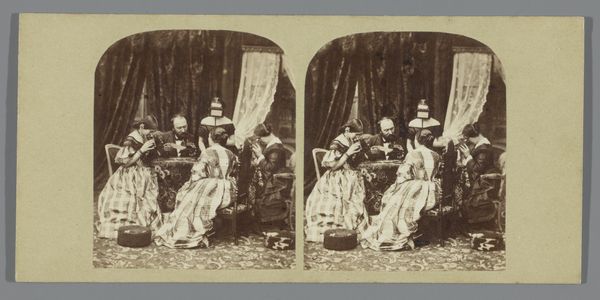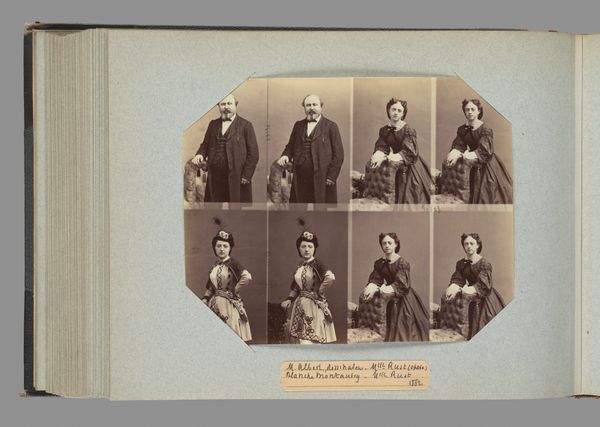
photography
#
portrait
#
photography
#
historical fashion
#
19th century
#
men
Dimensions: Image: 19.5 × 24.5 cm (7 11/16 × 9 5/8 in.)
Copyright: Public Domain
Editor: This is a photograph, entitled "Louis Revoil," taken sometime between 1865 and 1875 by André-Adolphe-Eugène Disdéri. It's a portrait of a woman, captured in eight different poses on one print. The style feels very formal, but also a bit repetitive with the striped dress and the almost identical settings. What symbolic readings can you find in such a conventional piece? Curator: Look closely. Even within apparent repetition, nuance surfaces. The subject’s shifting postures, hand gestures, and facial expressions hint at a personality striving for expression within the constraints of societal expectation. Consider the dress – stripes can denote conformity, but their dynamism can also signify individuality. Does it confine or empower? Editor: I hadn't thought of the dress like that! I was so focused on the almost clinical presentation. What about the props? Are they purely decorative, or do they hold some meaning? Curator: Good question! Observe the placement of objects like the table, chair, and even the painted backdrop. These elements were carefully arranged to communicate status, education, and perhaps even aspirations. It's a language spoken through objects – a kind of symbolic portraiture. What feelings do the props evoke? Editor: There’s a certain aspiration, a careful construction of identity for public consumption, but it feels stiff and forced. Curator: Precisely. And how might that be a reflection of the era itself? Photography democratized portraiture, yet simultaneously created new anxieties about representation. The quest to create a lasting impression – does it reflect confidence or vulnerability? Editor: That’s fascinating – so the repetition becomes a sort of echo of those anxieties, this striving to capture the perfect image, but always falling slightly short. I'm beginning to see more in the work than I initially did. Curator: Indeed. By considering these symbols, we begin to understand not just the individual, but the cultural memory embedded in the image itself.
Comments
No comments
Be the first to comment and join the conversation on the ultimate creative platform.
